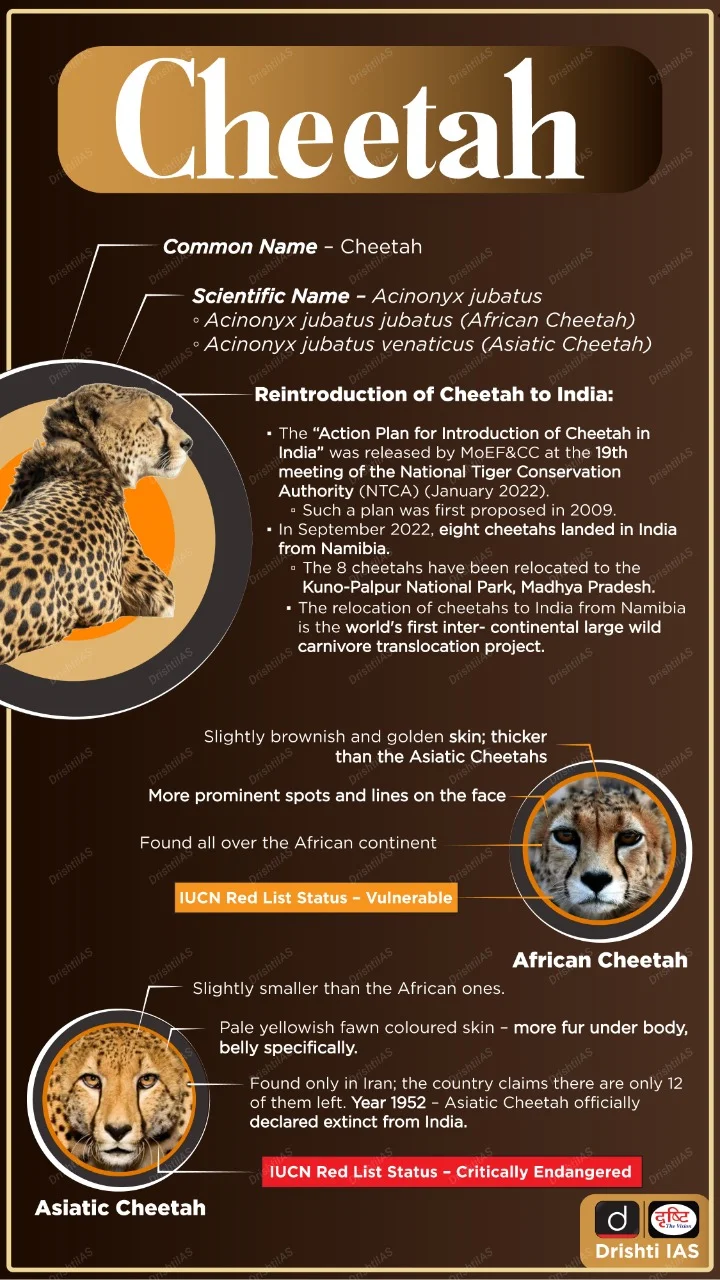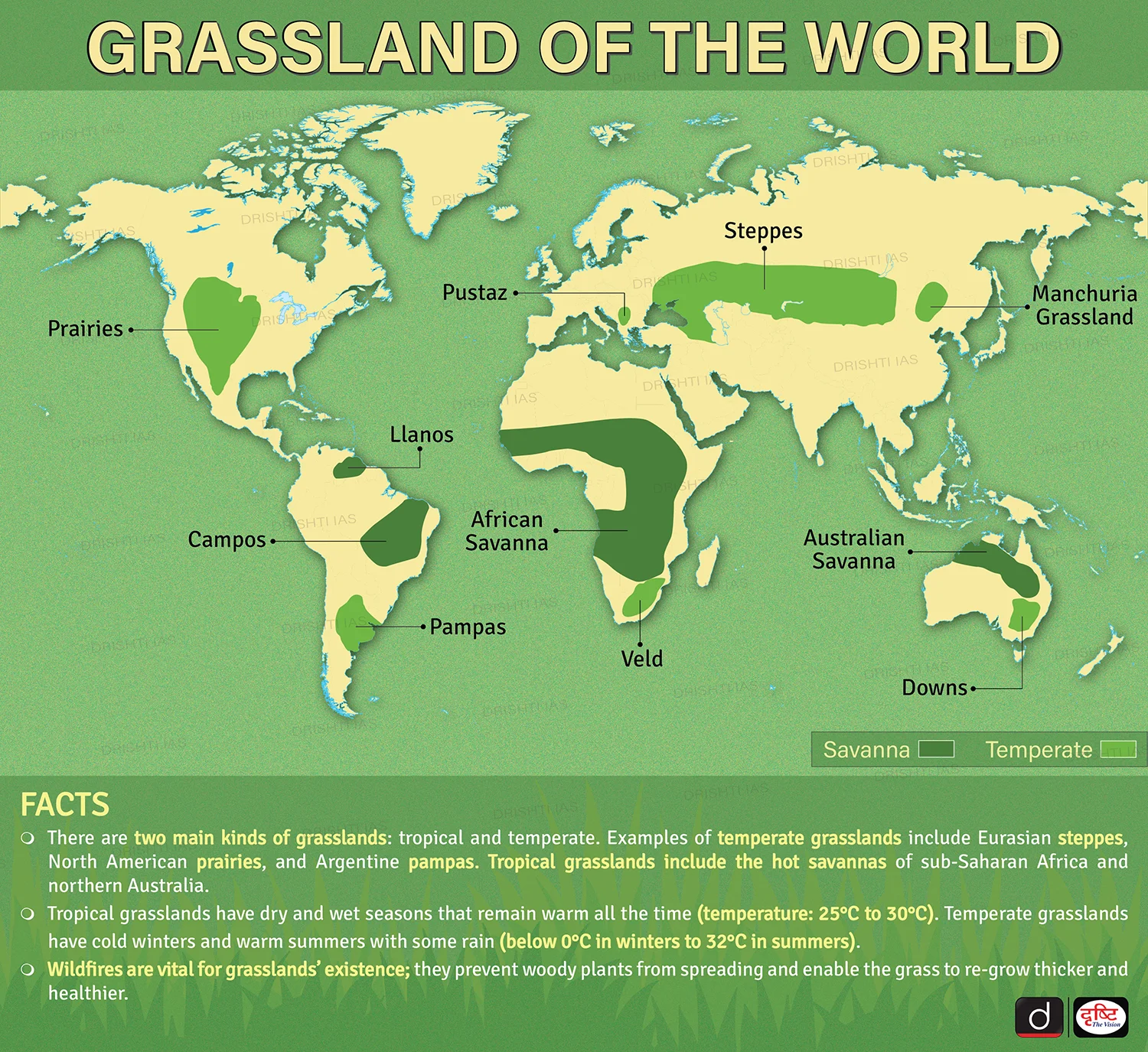Rapid Fire
Gujarat's Banni Grasslands Ready for Cheetah Reintroduction
- 19 Jul 2025
- 3 min read
Banni Grasslands in Gujarat, a designated site under Project Cheetah, is now ready for cheetah reintroduction with a 600-hectare enclosure, rising herbivore populations, and necessary infrastructure.
Banni Grasslands
- About: Banni is Asia’s largest grassland, located near the Great Rann of Kutch in Gujarat.
- The Banni Grasslands emerged from the sea due to tectonic activities.
- Vegetation: Vegetation is sparse and largely rainfall-dependent. It is dominated by low-growing plants, forbs, and graminoids, many of which are halophytic (salt-tolerant), along with scattered trees and scrublands.
- It is also known for the mysterious "Chir Batti" or ghost lights that appear at night.
- Ecosystem: Banni features a unique blend of wetlands and grasslands, coexisting side by side.
- Key species include Banni buffalo, Kankrej cattle, Indian wild ass, camel, and horse.
- Cultural Significance: Banni is home to several semi-nomadic communities, such as the Maldharis (silvipastoralists).
- Maldharis (keeper of animal stock) are a tribal herdsmen community living in Banni and Gir Forest regions. They rear sheep, goats, cows, buffaloes, and camels.
- An Ideal Habitat for Cheetah: The grasslands closely resemble the cheetah's natural habitat in Africa, with vast expanses of grasslands, savannahs, and scrublands, making it a perfect site for the big cats.
- The Gujarat Forest Department has set up a breeding center and enhanced the prey population (chital and sambar) to support the cheetahs.
Cheetah
- The cheetah, the world’s fastest mammal, is the only large carnivore extinct in India (1952).
- Unlike other big cats, it does not roar, but uses chirps, barks, and stutter barks to mark presence and territory.
- Cheetahs are solitary and mark territory through urine sprays, cheek rubbing, and tree scratches.
| Read More: One Year of Project Cheetah |








